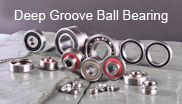What are Ceramic Ball Bearings?
Ceramic ball bearings are ball bearings that are made of ceramic rather than steel. A ball bearing is a piece of equipment that uses balls to reduce friction in a spinning system. The balls and rolling elements in a ball bearing are traditionally made of steel. However, ceramic ball bearings have emerged and are being used in a variety of applications. Some examples of products that use ceramic ball bearings are inline skates, skateboards, hard drives and motorcycles. They are also used in industrial equipment, racing cars, and go-carts.
Ball bearings are made up of three major components: an outer race, an inner race, and the balls. The inner race is a circular piece of material that is fixed in place. The balls rest on the inner race and are enclosed by the outer race. In the case of a skateboard wheel, the bearings are inserted into the wheel. Ceramic ball bearings are preferred by some skaters because it produces a smoother and faster ride with less effort being put in by the skater.
There are three different types of ceramic ball bearings: full ceramic bearings, hybrid ceramic bearings, and partial ceramic bearings. Full ceramic ball bearings use ceramic, commonly silicon nitrate, to make the balls and all the rolling elements. Hybrid ceramic bearings use ceramic balls but steel rolling elements. Partial ceramic bearings use ceramic to make the balls and inner race, but stainless steel to make the outer race. It should be noted that the balls in each of these applications are always ceramic.
Many people are using ceramic ball bearings in their applications because ceramic is lighter than steel. Its lighter weight allows it to spin faster with less energy being put in. Thus, it takes less energy to achieve and maintain a certain speed. Faster speeds also cause less friction than steel bearings. The reduced friction equals less heat and a more efficient energy transfer.



